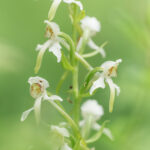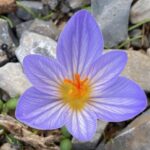Description
Indulge in the botanical treasures of Europe’s finest natural rock garden with Paul Harcout Davies on our exciting tour of the Gargano peninusla in Italy!!
For the lover of wildflowers, wild orchids in particular, few localities can even begin to rival the Gargano peninsula in Puglia, southern Italy, both for the variety of species and their profusion. Gargano was once an island separated from the Italian mainland by the Adriatic sea. It moved on its tectonic plate and the channel with the mainland gradually silted up to form the fertile plain of Foggia and now sticks out as the spur on the heel of Italy’s boot. Away from the coast the land rises to Monte Calvo at 1,065 m (3,494 ft). Most of the upland area, about 1,200 km2 (460 sq mi), is part of the Gargano National Park and the change in altitude between the base and heights means that plants at high level flower some three to four weeks after the same species at the coast
There is a wonderful central forest with huge ancient beech trees (Foresta Umbra), where, in spring, there is an under-story of blue anemones (Anemone blanda) white narcissus (Narcissus poeticus), yellow orchids (Dactylorhiza romana) and occasional peonies (Peonia mascula)…and many others.
The rich orchid flora numbers several endemic (or near endemics)…Ophrys sipontensis, O. archipelago, O. promontori and O biscutella. The total number of species is open to dispute and depends whether you are a ‘splitter or lumper’… what is fascinating is that hybrids, particularly of the genus Ophrys are more frequent than in most other places for the tiny pollinating bees are not as faithful here and are not restricted to a single Ophrys species.
Orchids are a special feature but there are wonderful displays to delight the eye (and the camera) …yellow tulips (Tulipa australis) veritable acres of two species of irises (dwarf Iris pseudopumila – predominantly pale yellow) and the endemic Iris biflora mainly deep blue/purple but also in cream and yellow) Then there are and peonies (Peonia mascula) in the beechwood, narcissus anemones and a plethora of other colourful wild species. The whereabouts of many of the best plant locations often elude the casual visitor but they can be discovered by wandering away from the beaten track through the stone-strewn areas.
The introduction to the natural history of southern Italy begins as we make our way up the coast from Bari airport stopping at the vast area of salt pans near St Margherita di Savoia (where there are flamingos, black-winged stilts, bittern and nesting storks as well as a variety of raptors including hen harrier…). Depending on the arrival of spring butterflies on the wing include southern festoon, cleopatra and Provence orange tip. And we do not forget the rich history and culture of this region for Paul HD and Lois ferguson are Italophiles who know this area and its natural and human history.
We stay in two centres, one in Monte St Angelo to give easy access to the heights and allow us to wander from our hotel, the other, by the sea, in the small town of Peschici: both towns have medieval town centres with lanes, nooks and crannies.
READ FULL HOLIDAY DETAILS










Reviews
There are no reviews yet.